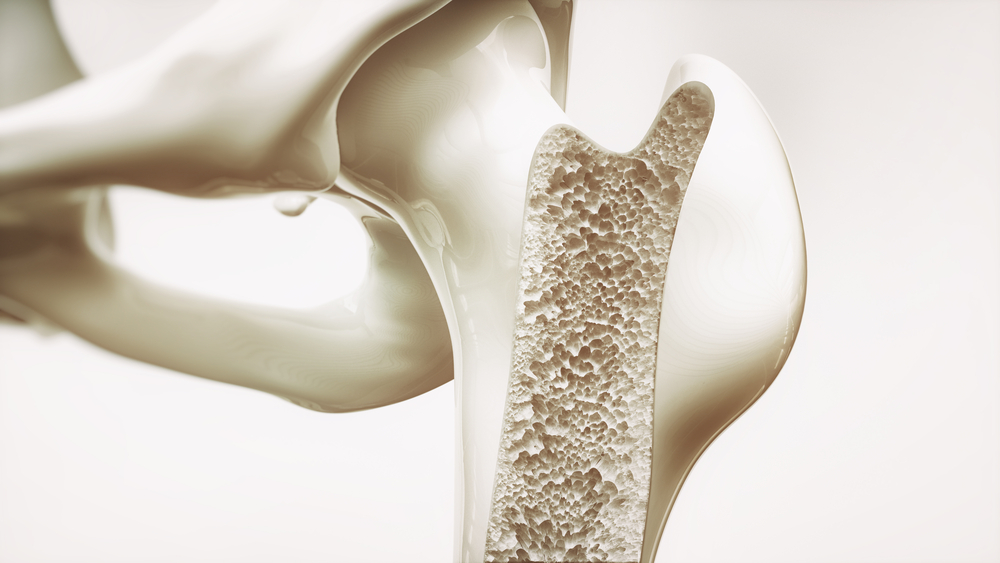Annual Zoledronic Acid Injection May Improve Bone Health in Children with Rett Syndrome

One injection per year of zoledronic acid (sold under the brand name Reclast) can help prevent bone deterioration and fractures in children with Rett syndrome, a clinical study shows.
The study, “Annual Injection of Zoledronic Acid Improves Bone Status in Children with Cerebral Palsy and Rett Syndrome,” was published in the journal Calcified Tissue International.
Rett syndrome is a genetic disorder characterized by impaired development of the central nervous system. First clinical symptoms often appear during infancy, including language delay and walking impairment. But these children, almost all girls, commonly develop other complications such as epilepsy, gastrointestinal disorders, and scoliosis (spine deformity).
Osteoporosis (low bone density) also is a well-known complication of Rett syndrome, affecting approximately 50% of female patients. Patients with osteoporosis may have a decrease in bone mass, low bone mineral content (BMC), low bone mineral density (BMD), and an increased risk for fractures.
A previous study has suggested that patients with Rett syndrome should take calcium and vitamin D supplements to prevent bone deterioration as soon as these two molecules are found to be reduced in the blood. Treatment with bisphosphonates — a class of compounds commonly used to reduce bone density loss in adulthood — also has been suggested for children with osteoporosis.
Treatment with Aredia (pamidronate), one of the most commonly used bisphosphonates available, has reduced fracture incidence significantly among girls with Rett syndrome and severe bone fragility.
For the recent study, a French research team explored the safety and effectiveness of an annual infusion of zoledronic acid, a third-generation bisphosphonate therapy, to treat bone fragility in patients with Rett syndrome and cerebral palsy who had fractures and/or bone pain.
Zoledronic acid has shown to be 100–200 times more effective than Aredia, while it also is easier to use. It requires only one injection per year, in contrast with other bisphosphonates that may need two to four treatment cycles per year.
The study included 19 patients with cerebral palsy and eight girls with Rett syndrome, from 7 to 17 years old, who were followed at the University Children’s Hospital of Nancy, France. They all received one intravenous infusion of 0.1 mg/kg zoledronic acid, up to a maximum dose of 4 mg per year, as well as supplements of calcium and vitamin D. Zoledronic acid was administered every year until lumbar spine bone mineral density (BMD) became superior to −1.0 SD. (BMD in osteoporosis is defined as −2.5 SD or lower.)
Thirteen children (76%) were treated with anti-epileptic agents, which are associated with greater risk of osteoporosis. Sixty-three percent of patients had a pathologic fracture before the diagnosis of osteoporosis. Most (81%) patients complained of bone pain related to osteoporosis.
Analysis of bone-related metabolites did not show any significant changes, with Rett patients having blood values within normal ranges for each assessed parameter.
The team evaluated changes in BMD one year after the first zoledronic acid injection. Both lumbar spine and femoral bone mineral density increased. During the one year of follow-up no participant had bone fractures. In addition, one Rett patient had fewer seizures after the first zoledronic acid injection, which could be related to the decrease in bone pain.
One parent reported decreased pain and increased level of activity. “Our study is retrospective, we cannot assess the reduction of pain, but all parents report an improvement in the quality of life, even in everyday tasks, such as cutting their nails,” researchers wrote.
The most common adverse side effects related to the treatment were flu-like symptoms and reduced calcium levels after the first injection. These affected mainly younger patients. No serious complications were reported.
These safety and effectiveness data support yearly 0.1 mg/kg administration of zoledronic acid in children with Rett syndrome. “It improves BMD, and it may be possible to normalize this bone parameter before adulthood,” researchers said.
Additional studies are warranted to explore the long-term impact of treatment with zoledronic acid in this young population to confirm its safety, in particular the development of dental complications.






